Robert Lienemann and team
extend their previous pioneering study focusing on the gunshops at Bethlehem
and Christian’s Spring 1750-1790
224 pages with high quality photos - most in color, plus sketches and critical dimensions
Great reference for collectors, builders, restorers, and historians
Our
first book – Moravian Gun Making of the American Revolution included a brief history plus twelve wonderful
arms - rifles, smooth rifles, a swivel breech rifle, fowler and pistol from
various communities over many years, and allowed for a broad introduction to
Moravian gunmaking.
In contrast, Moravian
Gunmaking II focuses narrowly on arms
that were – or may have been made at the gunshop set up at Bethlehem in 1750,
which then moved ca 1759 – 1763 to Christian’s Spring – a small community where
young men and boys learned trades in support of their mission work. The gunshop there was very active during several
wars, but it and the broader vocational effort had faded by 1790.
An introduction is
provided to Moravian gunmaking, and the two gunshops along with typical tools,
materials and techniques are discussed.
This is followed by a brief summary of who was where, their roles and
what was happening in the world around them for each year 1750 through
1790. Then come chapters introducing the
arms, their art and history.
Many individuals,
families and museums have shared their collections, and new color photographs
were taken of all available pieces.
Wherever possible, key dimensions are given and construction details
reviewed and compared. This should be of
value to study, stocking and restoration, while still being respectful of those
who have shared their treasures with us. Twenty two long guns, a pistol and a pair of
pistols are presented in this book, often with eight to fifteen or more photos
each –
A
ca 1725 rifle and ca 1750 pistol stocked in Germany, to show what Albrecht,
Beck and others might have learned as apprentices and journeymen there, and
what they may have taught their young apprentices here
The
keystone Edward Marshall rifle, often attributed to Andreas Albrecht, presented
in color with comments from John Bivins and the author
Smooth
rifle that seems a twin to the Marshall rifle, with comments from a prior
curator
Rifle
attributed to Albrecht, known as rifle # 43 in Shumway’s Rifles of Colonial America, Vol I
Photos
and notes regarding a “lost” rifle that might have come from these shops
1773
Christian Oerter rifle, known only from a letter in Oerter’s hand describing
his work
Oerter
rifle signed and dated 1774 with wood patchbox and wire inlay, now restored
“New”
1774 Oerter rifle, recently discovered in Europe in near new condition, broken
down for careful review inside and out, with nearly 50 photos, many dimensions
and details
1774
Oerter rifle for Coykendall, restored and now in color with review
Extensively
decorated “new” 1774 Oerter rifle for Hankinson with review
Hankinson thumb piece and wire inlay
Aaron Hankinson portrait
Aaron Hankinson gravestone
Short
description of another surviving 1774 Oerter rifle without photos
Signed
and dated 1774 Oerter barrel in probable restock
1775
Oerter smooth rifle at Windsor Castle with modifications by Durs Egg (Shumway’s
# 44), also in near new condition, now in color with detailed review
1775
Oerter rifle stolen from Valley Forge (Shumway’s # 45), with additional black
and white photos which clearly show the profile, details and wire inlay
A
long fowler attributed to the Christian’s Spring gun shop
Fine
pair of brass barreled pistols signed W Henry, Jr. at Nazareth, now in color
·
Six additional rifles or
smooth rifles that seem related to these gunshops are presented in color with
notes. Two are covered extensively, while
four are mentioned briefly with two or three photos each.
We also learn about the musical
abilities of these individuals, and their formal teaching roles. Their additional artistic talents and the
closed nature of the two communities may have allowed and encouraged greater
artistic expression at the bench.
This focus on one trade at
two locations allows a more in-depth study of how the gunmaking trade operated,
and much of the understanding of the trade can be projected to other men and
shops in this period.
Here is a small part of the story of the birth and
development of the Kentucky rifle, and of our art and history expressed upon
this common tool.
The book is now available on the Kentucky Rifle Foundation's website under the Store. You can order online with PayPal, credit card or with a check by mail. The book sells for $85.00 plus $8.95 S&H. Proceeds support the KRF mission of broadening the knowledge and appreciation of the American longrifle. Descriptions of all KRF books, CDs, and ordering information can be found at: kentuckyriflefoundation.org (or send check or money order to: Kentucky Rifle Foundation, 844 Round Hill Rd, Winchester, VA 22602)
Copy and photos supplied by by Robert Lienemann.
Copy and photos supplied by by Robert Lienemann.








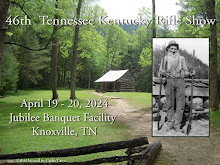

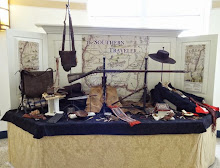





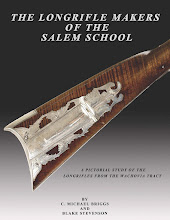

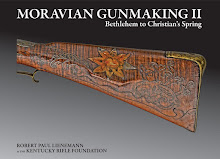


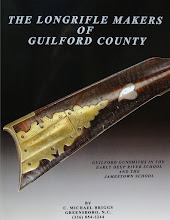

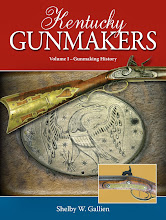









No comments:
Post a Comment
Note: Only a member of this blog may post a comment.